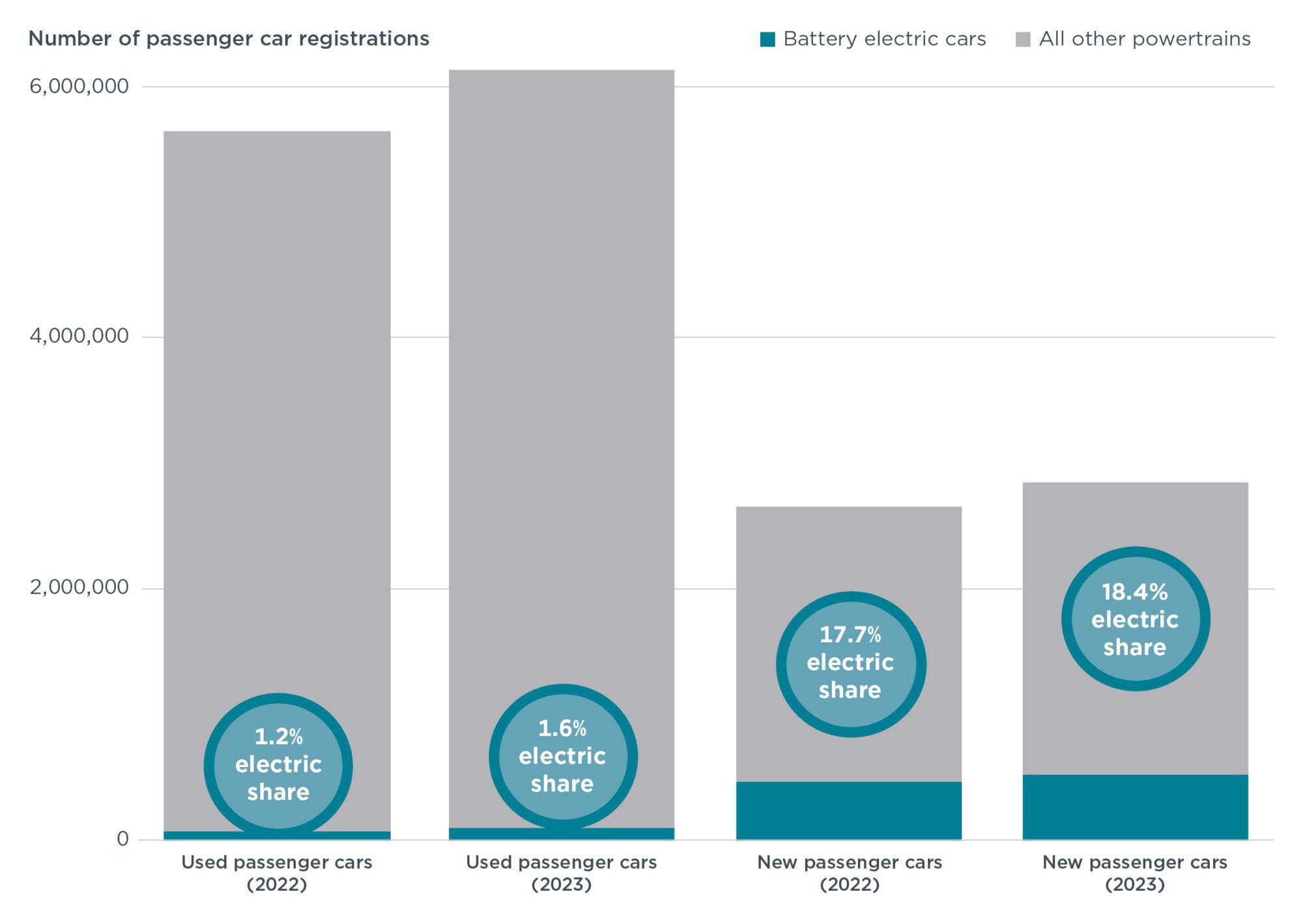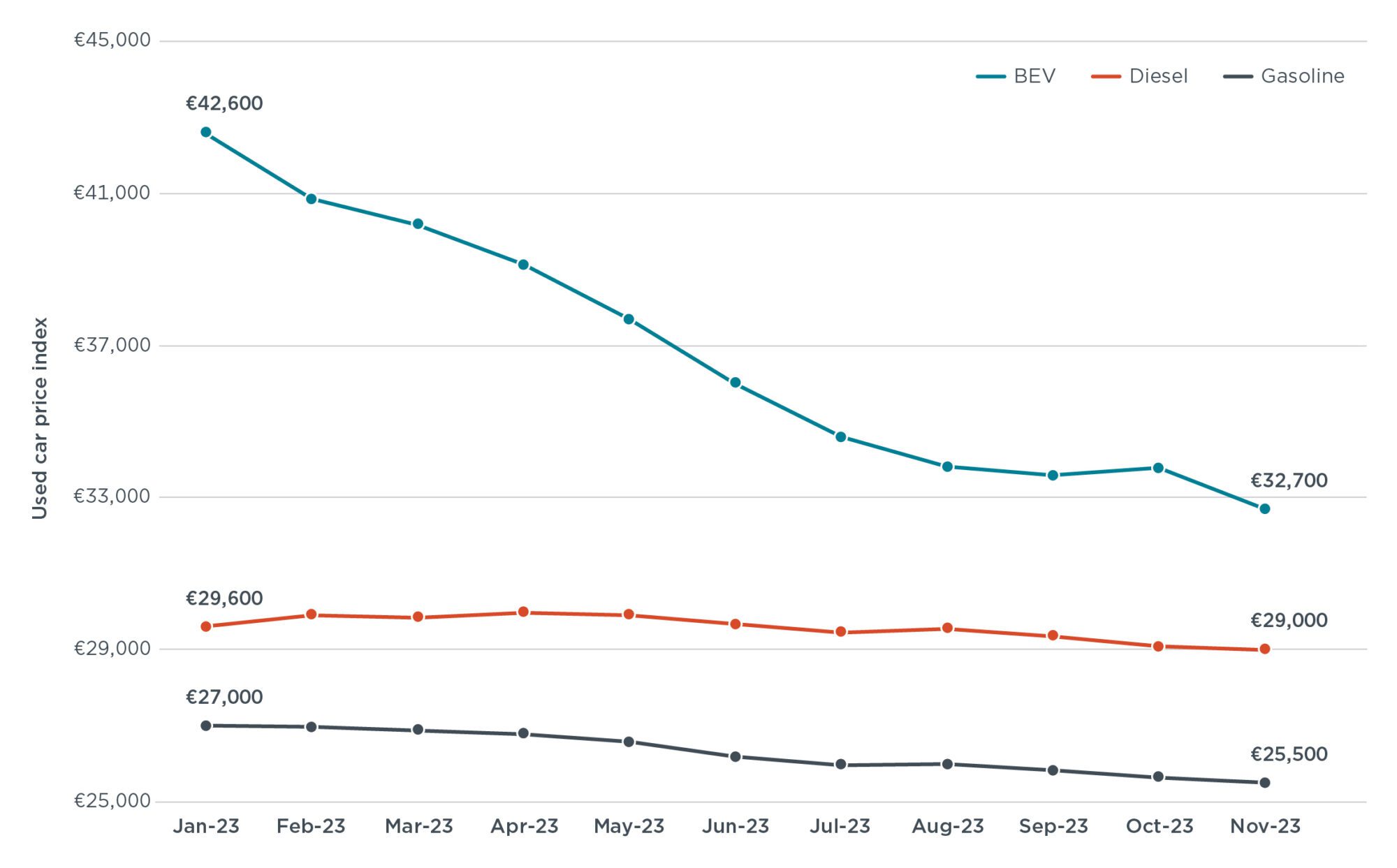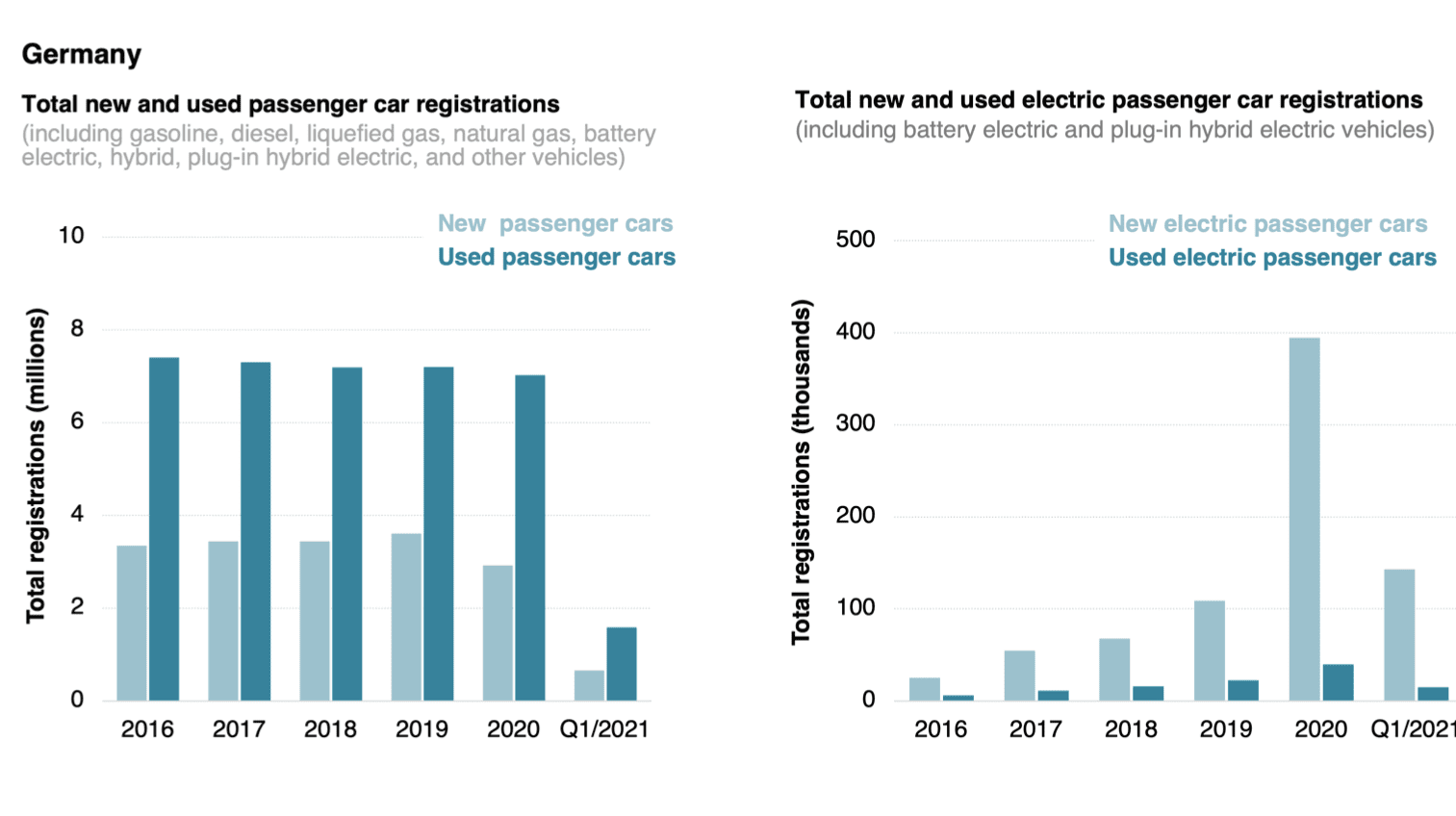The role of the used car market in accelerating equal access to electric vehicles
Blog
Keep up the good sales: Ways to support the market for used BEVs in Germany
In Germany, expanding the market for used battery electric vehicles (BEVs) is likely to play an important role in broadening access to these vehicles. As the purchase price of used BEVs can still be cost prohibitive to some groups, a larger supply of used BEVs may help to improve their affordability. So, what is the current state of the used BEV market in Germany and what can the government do to accelerate its expansion?
According to the Kraftfahrt-Bundesamt, or the Federal Motor Transport Authority of Germany, in 2022, used BEVs were around 69,000 of the 5.6 million vehicle ownership transfers that occurred in Germany, a 1.2% share (Figure 1). In comparison, BEVs were 17.7% of the over 3 million new vehicles that were registered that year. In 2023, the share of BEVs in used car transfers rose slightly to 1.6%, and for new vehicles, BEVs were an 18.4% share.

The number and share of used BEVs in vehicle ownership transfers rose through most of 2023. The highest recorded share of BEVs in the used vehicle market that year was 2.3% in September, when over 11,400 vehicles were transferred. The increasing number of used BEVs in the market is reflective of the higher number of BEVs that entered the stock starting in 2020, as the average holding period for leased cars is around 2 to 4 years for company cars and 6 years for privately owned cars. In 2020, BEVs were 0.3% of the nearly 48.8 million vehicles in the on-road stock in Germany and that share reached 2.1% in 2023.
As shown in Table 1, the growth of used BEVs from 2022 to 2023 (+40%) outpaced the overall markets for new and used cars, which both grew by 7% during that period. The only fuel types that had higher growth shares than used BEVs were used plug-in hybrid vehicles (PHEVs) and used hybrid vehicles, both of which saw higher year-to-year share increases with 45% and 44%, respectively. New hybrid vehicles also saw a higher growth rate of 43%. That new PHEVs shrunk by 52% from 2022 to 2023 was likely due to the phaseout of the PHEV purchase incentive at the end of 2022. Among internal combustion engine vehicles (ICEVs), the number of used gasoline car registrations grew by only 2% compared with new registrations at 13%. Used diesel cars grew by a larger margin of 10%.
| Used car registrations | New car registrations | |||||
| Powertrain type | 2022 | 2023 | Percent change 2022 versus 2023 | 2022 | 2023 | Percent change 2022 versus 2023 |
| Battery electric | 69,594 | 97,430 | +40% | 470,559 | 524,219 | +11% |
| Plug-in hybrid | 66,631 | 96,873 | +45% | 362,093 | 175,724 | -52% |
| Hybrid | 208,339 | 299,928 | +44% | 465,228 | 664,580 | +43% |
| Gasoline | 3,552,720 | 3,624,010 | +2% | 863,445 | 978,660 | +13% |
| Diesel | 1,690,572 | 1,860,702 | +10% | 472,274 | 486,581 | +3% |
| Total | 5,641,516 | 6,030,874 | +7% | 2,651,357 | 2,844,609 | +7% |
In 2023, AutoScout24, the largest European online vehicle marketplace, reported that prices of used BEVs dropped substantially while prices of used gasoline and diesel vehicles stayed relatively constant (Figure 2). From January to November 2023, the index price, or the weighted average price over time, of used BEVs fell by 23%; for used gasoline and diesel cars, prices dropped by 6% and 2%, respectively, over the same time period. This is likely due to a growing supply of used BEVs for sale and a larger number of more affordable, non-premium BEVs being available for purchase.

- A BEV mandate for fleets would require that corporate fleets be made up of a specific percentage of new BEVs within a designated time frame. This would have broad climate benefits, as fleets in Germany made up roughly one-third of all new vehicle registrations in 2022. Beyond the environmental benefits, adding thousands of new BEVs to the on-road stock would be a boost to the secondhand market. The companies that purchase BEVs would also save money over time because of the lower total operating costs of BEVs when compared with gasoline and diesel ICEVs.
- A bonus-malus system would levy fees on the purchase of ICEVs and use the funds to provide financial incentives to purchase BEVs. If designed to be revenue-neutral, the system could be self-sustaining and would not require funds from the government budget. A staggered bonus based on vehicle size, with larger bonuses for smaller vehicles, would also promote affordability because smaller cars are typically less expensive.
- Interest-free loans for used BEV purchase for those with lower incomes can eliminate the additional financial burdens that come from traditional loans with higher interest rates. Some countries, such as Scotland and France, offer interest-free or low-interest loans for the purchase of used BEVs. A program such as this in Germany could be designed to benefit those with lower incomes by capping eligibility based on the applicants’ taxable gross income. It additionally could promote smaller, more affordable vehicle models by limiting loan eligibility based on vehicle size and price.
Continued development of the used BEV market will allow more Germans who are dependent on a car to participate in the transition from ICEVs to BEVs. Taking actions to accelerate the growth of this burgeoning market will also help bring the country closer to accomplishing its climate goals.
Authors
Related Publications
THE ROLE OF THE USED CAR MARKET IN ACCELERATING EQUAL ACCESS TO ELECTRIC VEHICLES
The new EV market is gaining speed in the EU, but how can policies encourage growth in the used EV sales?



